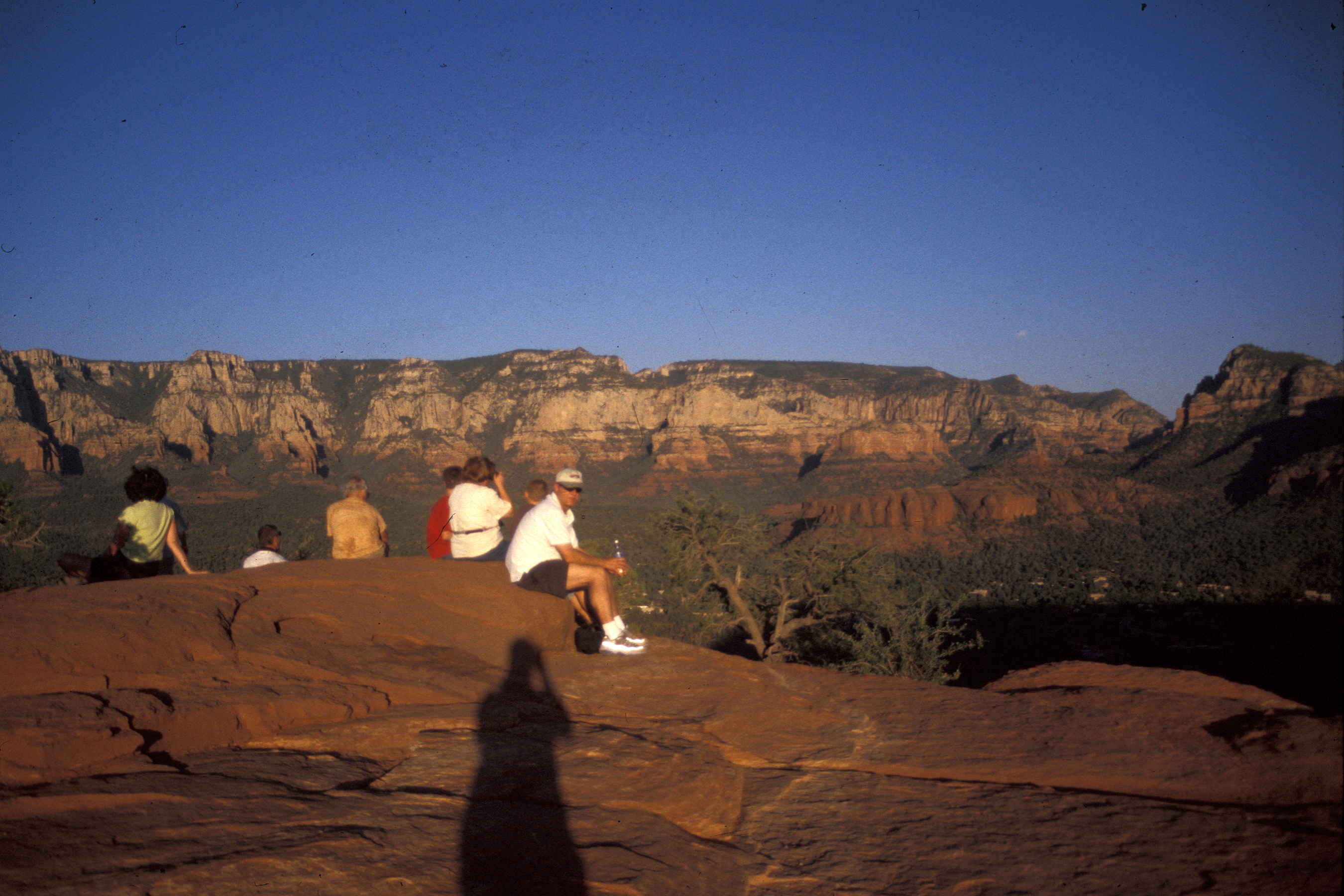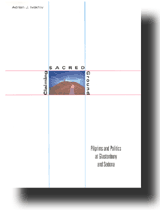

Place, pilgrimage, & the politics of landscape
How are places made meaningful? How do we distribute value & meaning across
space, place, landscape, territory? What does it mean for a place to be 'sacred'? For whom, and at what cost?
Scholars of religion have
recently been arguing that even the very terms “religion”
and “the sacred” are relative, historically changing terms -- they
emerged to distinguish
certain things from others, in some people's favor and at others'
expense. “Religion” was distinguised from “magic”
and “superstition” (when white European men - colonizers like the
sponsors of Christopher
Columbus's trip to the Americas - wanted to distinguish
themselves from those they colonized and conquered) or from
“science” and “secularism” (when white European men - Enlightenment
philosophes like Diderot
- wanted to get the
Church out of the institutions that mattered). “A
religion” became an identifiable system of
related beliefs and practices clearly distinguishable from other such
systems (when white European men - the enlightened anthopologists of
their time - wanted to classify the cultures of the world and describe
and compare their features).
Where religious practices may
have once been part of the political, the
artistic, even the economic spheres - things were done in accordance
with beliefs about sacred values - modernity has separated these into
distinct and autonomous spheres of life. Religion today is found in
churches and temples and in the organizations we call "churches". It's
an
individual option. On the template of modern selfhood, there is a place
that says "What religion are you?" and numerous options are offered to
fill in that place (though "atheist" doesn't work as well in the red
states as in Europe).
As religion has become an individual option, so has
"spirituality" - that blurry continuum of things people do to get a
sense of meaning in their lives, to feel a sense of connectedness with
whatever power they believe to be "behind" or "in charge of" the
maelstrom of life.
Sacredness oozes out of the
very things people do: we want certain
things to be set aside from others, to be treated differently, more
reverently, not to be bought and sold or profaned with just any
activity. And we do things in order to protect the sanctity of those
things - objects, places, activities. But we do all of those things
in the midst of trying to live and to succeed (often at others'
expense). In a world in which tourism is the number one industry (or
close to it), sacred places
become tourist spaces. Those with the money to travel do so, and the
places they
visit become part of their identity as worldly travelers. Those without
it package themselves and their places to become worthy of tourists'
attention. And so on. (John Urry's Tourist
Gaze and Dean MacCannell's The
Tourist remain the quintessential books on this.)
What happens to the
places
themselves (and the people) in the process?
Selected writings
- Claiming
Sacred Ground: Pilgrims
and Politics at Glastonbury and Sedona (Indiana University Press, 2001) looks at these processes and their
effects at two places where latter-day spiritual pilgrims have
congregated. It deals with the cultural and environmental politics of
landscape, of sacred place, of pilgrimage and tourism at those two
places. And it examines the New Age and Earth spirituality movements -
the beliefs and practices of Gaia's pilgrims who congregate at these
and similar "power places" - through the lens of critical social
science (of a sympathetic kind) and ecological philosophy.
- EXCERPTS, OUT-TAKES, REVIEWS, AND RELATED MATERIAL CAN BE FOUND AT THE CLAIMING SACRED GROUND page.
Click
to read excerpts on Amazon.
 Or read
the first chapter here.
Or read
the first chapter here.
Theory: Religion, Nature, Geography
Eco-Spirituality and Nature Religion
- Earth
mysteries entry from the Encyclopedia of Religion & Nature (see below)
- Nature
and Self in New Age Pilgrimage, Culture and Religion 4 (1),
2003, 93-118. Click for pdf.
- Orchestrating Sacred Space: Beyond the Social
Construction
of Nature, Ecotheology:
Journal of Religion, Nature, and the Environment 8 (1), 2003, pp.
11-29.
- Seeing Red and Hearing Voices in Red Rock Country, in Deterritorialisations:
Revisioning Landscapes and Politics, ed. Mark Dorrian and Gillian
Rose (London: Black Dog Publications, 2003).
- Red Rocks, Vortexes, and the Selling of Sedona:
Environmental Politics in the New Age. Social Compass: International
Review of Sociology of Religion 44 (3), 1997, pp. 67-84.
- Nature
and Ethnicity in East European Paganism: An Environmental Ethics of the
Religious Right? Pomegranate 7 (2),
2005, pp. 194-225. Click for pdf.
- In
Search of Deeper Identities: Neo-Paganism and Native Faith in
Contemporary Ukraine. Nova
Religio 8 (3), 2005, pp. 7-38. Click for pdf.
- The Revival of Ukrainian Native Faith, in Modern Paganism in World Cultures: Comparative Perspectives, ed. M. F. Strmiska (ABC-Clio, 2005).
Etc.
- SpiritMatter @ Immanence (religion, spirituality, bodymind, & related topics)
- The Encyclopedia of Religion
and
Nature (with Laura Hobgood Oster, Jeffrey Kaplan,
Bron Taylor, and Michael York; London: Thoemmes Continuum, 2005) - a two-volume, 1800-page, 520-contributor
international scholarly megaproject capably headed by editor-in-chief
Bron Taylor - deals with these issues and many more in the growing
areas of religion and ecology, religion and environment, religion and
nature. Click for my entry on Earth
mysteries.
Go back to Adrian Ivakhiv's home
page.




 Or read
the first chapter here.
Or read
the first chapter here.